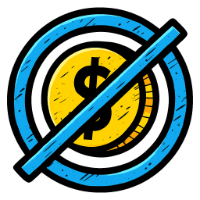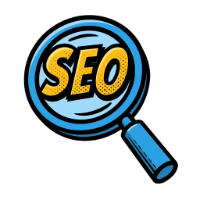WordPress is a free, open-source web application for managing website content. It allows for the organization of pages in a hierarchical structure and can be used as a full-featured Content Management System (CMS). Thanks to its user-friendly interface and flexibility, WordPress is the ideal solution for both small and large-scale projects.
Did you know that the following globally recognized companies have been using WordPress for years?
Market Share
WordPress powers over 43% of all websites worldwide. Among sites using a content management system (CMS), its share reaches approximately 61.4%. This makes WordPress the leading CMS globally. (source)
🔌 Plugins
Currently, there are over 65,000 plugins available in the official WordPress Plugin Directory. These greatly extend the functionality of websites. Additionally, many premium plugins are offered on platforms like CodeCanyon. This wide range of tools allows for complete customization – from advanced shop systems like WooCommerce to simple social media buttons. (source)
In our projects, we rely on WordPress in combination with the Elementor page builder. This setup offers an intuitive experience for our clients and delivers SEO-friendly HTML code, which improves both loading speed and search engine visibility.
With WordPress and Elementor, any website can be easily adapted and maintained – without advanced coding knowledge.
Thanks to its open-source community and regular updates, WordPress stays secure and up to date. That’s why we recommend WordPress as the best system for building websites and online shops.
Learn more here.









During Responsive Web Design (also known as RWD), websites are programmed to display optimally on all devices (smartphones, tablets, desktops, smart TVs). The graphical layout of a ‚responsive‘ website is based on the requirements of the device accessing it. The placement and display of individual elements such as navigation, sidebars, and text are emphasized, as well as the use of different input methods such as clicking and hovering with the mouse or tapping and swiping on a touchscreen. The technical requirements for responsive design are based on newer web standards such as HTML5 and CSS3 (stylesheets).
The currently applied Google strategy „Mobile First“ has a significant impact on web design and the presentation of web content. What was once considered ’state of the art‘ and criticized is now experiencing a reversal that focuses on clicking and scrolling. Design concepts such as Infinite Scrolling (endlessly scrolling web pages) or the Parallax Effect (where individual elements of a website move at different speeds, creating a sense of depth) are currently very popular.
Currently, Infinite Scrolling is successfully implemented on all major social media platforms such as Facebook, Twitter, or Pinterest. These websites are now filled with thousands of articles, images, and videos that actually create the feeling of endless scrolling.
The pages seem to be getting tidier and tidier. There’s always space to ‚breathe‘ between content, making it easier to find at first glance. Website operators strive to provide the best possible user experience and not just cram as much content as possible onto the pages. Two trends play an important role in this approach:
The menu is often represented graphically as a small menu icon or ‚hamburger menu‚ icon, even in the standard desktop version of the website. The element looks like a packed hamburger from the side: ≡.
Card layout, also known as ‚card-based design‘, where texts, images, and even ‚call-to-action‘ buttons are displayed in multiple consecutive boxes. A good example of this is Pinterest.
Until recently, large and bold headings and the mixing of different fonts in web design were rather frowned upon. However, it has become a trend because their use often enhances different elements.“
„Even serif fonts are experiencing a true renaissance. They are commonly used in headings, quotes, or logos, and unlike typical sans-serif web fonts, they captivate viewers‘ interest.
The pricing is based on the individual requirements of the client.
For over 20 years, we have been successfully working with various CMS systems such as WordPress, TYPO3, and Joomla, as well as graphic software tools like Adobe Photoshop, Affinity Photo, and Adobe Premiere.
"All in one place" - In addition to providing a customized online marketing strategy, we also offer suitable web design and SEO-friendly web development with WordPress.
One of the most important challenges for a company website is protection against internet attacks. This is especially crucial considering the management of sensitive personal customer data.
We are always on the lookout for the latest trends, which include not only a graphical but also a technical component crucial for the success of the website.
Of course, after the website is published, we take care of updates, backups, and any editorial or design requests that arise from you during this time.
For some time now, we have been focusing exclusively on website projects implemented with WordPress. In terms of search engine optimization (SEO), WordPress currently delivers the best results.